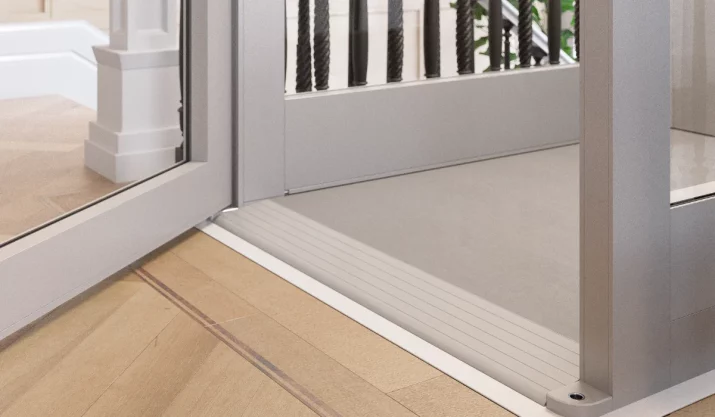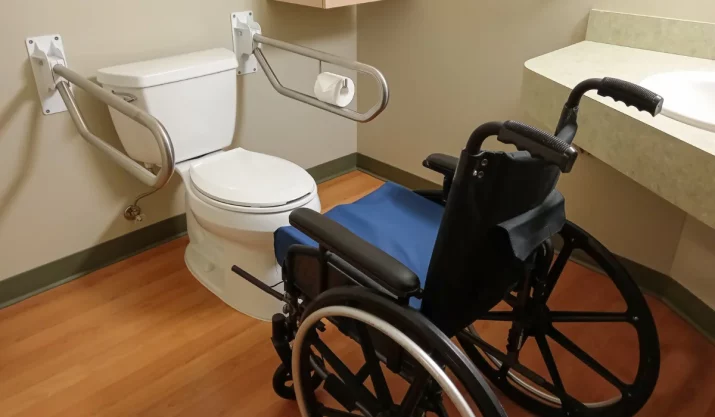Preparing Your Ramp for Rainy Season in Northern California

Table of Contents
- Key Takeaways
- How Weather Conditions Affect Wheelchair Ramp Safety
- Choosing the Best Ramp Material for Wet Weather
- Adding Safety Features for Rainy Season Stability
- Maintaining Ramp Functionality Year-Round
- Comparing Ramp Types and Specific Needs
- Making the Right Wheelchair Ramp Choice for Northern California Homes
- FAQs
Rainy weather in Northern California makes using a wheelchair ramp more challenging. Wet ramps get slippery, and wood can rot. If you prep your ramp, you and your family can move safely even in heavy rain.
Standing water reduces traction and wears down the ramp surface. Both wood and aluminum ramps need care to stay safe and strong. Add non-slip treads, sturdy handrails, and regular cleaning to keep secure all winter.
This guide covers weather risks, best ramp materials for wet months, and simple steps to keep your ramp in good shape all year.
Key Takeaways
- Choose weather-ready materials like aluminum. Aluminum does not rust or rot, so it holds up well in Northern California rain.
- Add slip-resistant treads or coatings. They improve traction and help prevent falls in wet weather.
- Check handrails, weight limits, and slope often. Regular inspections help keep the ramp sturdy and safe in heavy rain.
- Clean and maintain the ramp. Simple upkeep keeps it strong and may protect your warranty.
How Weather Conditions Affect Wheelchair Ramp Safety
Wheelchair ramps have their pros and cons. In Northern California, frequent rain adds wear to ramps. Wood absorbs water, which can cause soft spots and lower load capacity. That makes wood less safe for wheelchairs, power chairs, and scooters.
Aluminum ramps also become slick when dirt or mud accumulates on them. Add slip-resistant treads and clean the area often to reduce the risk of falls. Keep curbs and drainage paths clear to ensure water runs off effectively. If you use heavy mobility gear, check for bends and loose screws. A quick inspection before the rainy season helps you stay safe all year.
Suppose you’re considering replacing your current setup. In that case, it’s helpful to understand the real cost of installing a wheelchair ramp in California, so you can plan for long-term safety and maintenance before the next rainy season.
Choosing the Best Ramp Material for Wet Weather
You can build a safe and sturdy wheelchair ramp for your home. Your material choice affects how the ramp handles rain. Wood looks good and matches most homes, but it must be sealed or painted yearly to prevent rot. If you skip sealing, wood loses traction and may become unsafe.
Aluminum ramps are weather-resistant and rust-free. They clean easily and handle rain and humidity well. Add slip-resistant treads or coating to improve traction for users and caregivers.
If you use portable ramps or modular ramps, make sure they sit on flat, steady ground. Check the incline before using them so they’re not too steep or uneven. However, if your driveway has a steep incline, consider installing wheelchair ramps for steep driveways for efficient mobility.
A permanent ramp with good drainage near the base will last longer and stay safer through the winter months.
Adding Safety Features for Rainy Season Stability
A few minor upgrades can make a big difference in wheelchair ramp safety during rainy weather in California. Start with sturdy handrails that help you or your loved one stay balanced, especially on ramps with a longer incline. They also make it easier for caregivers to assist safely.
Adding a slip-resistant surface for wheelchair ramps is another simple way to improve traction. Rubber mats, grit tape, or grooved treads help keep wheels steady on wet ramps. Look for high-quality, weather-resistant products designed for outdoor use.
Inspect your ramp surfaces for algae or rust, especially if you live near the coast. Regularly cleaning and tightening hardware helps your ramp stay strong and safe throughout the entire season.
For added confidence, verify that your ramp’s handrails and incline comply with ADA standards, which establish clear safety guidelines for wheelchair users.
Maintaining Ramp Functionality Year-Round
Good maintenance helps your ramp work well and last longer. After storms, sweep off dirt and leaves, then wash with mild soap and water. Avoid harsh cleaners that damage wood or coatings. Check handrails, fasteners, and joints often to keep them tight and stable.
For modular ramps, ensure that each section aligns and meets the required weight rating. Add a small awning or cover to keep the ramp drier and easier to use. Routine care helps keep the ramp in good shape and may also help maintain the warranty’s validity.
Comparing Ramp Types and Specific Needs
Each type of ramp has its strengths. Wooden ramps are affordable, but they require yearly maintenance. Aluminum wheelchair ramps offer high-quality strength and are easier to maintain. Portable ramps are a great choice if you rent your home or don’t want to make a down payment on permanent construction.
Threshold ramps are small but helpful at entryways, while vertical platform lifts and outdoor stair lifts make higher steps accessible. Homes with limited space may benefit from modular ramps that can be moved or expanded as needs change.
When picking a ramp, consider your loved one’s mobility, local weather conditions, and long-term home accessibility goals. A safe, wheelchair accessible setup makes daily movement easier and more comfortable.
Making the Right Wheelchair Ramp Choice for Northern California Homes
Preparing for Northern California’s rainy season is about more than safety; it’s about comfort and independence. Choosing a ramp that suits your space, mobility needs, and local weather patterns can make daily routines easier, regardless of the forecast. With thoughtful setup and steady maintenance, your ramp can withstand years of use without issue.
If you’d like expert guidance on ramp options that match your home and lifestyle, our team at California Mobility offers personalized solutions designed for local conditions.
Contact us today or request a free quote. Our specialist will help you find the best ramp setup for dependable access and peace of mind throughout the year.






